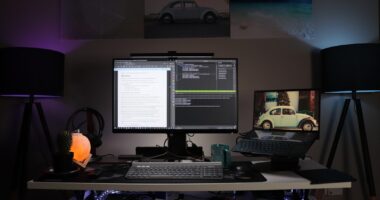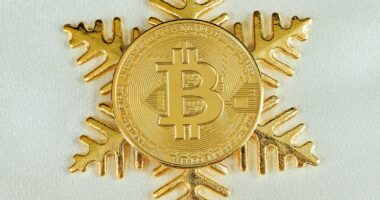Non-fungible tokens (NFTs) are unique digital assets stored on blockchain technology, providing verifiable ownership and authenticity for digital content. These tokens have significantly impacted the art world by enabling artists to create, sell, and distribute digital art with provable scarcity and originality. NFTs have expanded the global reach of artists and introduced new revenue streams, including the potential for ongoing royalties from secondary sales.
The technology behind NFTs offers increased transparency and security in art transactions. The blockchain’s immutable ledger provides a permanent record of ownership and provenance, potentially reducing instances of fraud and forgery in the art market. This enhanced trust and traceability benefit both creators and collectors.
NFTs have applications beyond traditional art forms, encompassing digital paintings, animations, music, and even virtual real estate. This versatility has opened up new markets and opportunities for creators across various digital media. The NFT ecosystem has the potential to democratize art creation and collection, allowing for direct artist-to-consumer relationships and bypassing traditional gatekeepers in the art world.
Key Takeaways
- NFTs are unique digital assets that represent ownership of a specific item or piece of art, and they have the potential to revolutionize the art market by providing artists with new ways to monetize their work.
- When choosing a platform for minting NFT art, it’s important to consider factors such as fees, user interface, and the platform’s reputation within the NFT community.
- Creating unique and marketable NFT art involves leveraging digital tools and techniques to produce high-quality, original work that stands out in a crowded marketplace.
- Marketing and promoting NFT art to potential buyers requires a strategic approach that includes leveraging social media, online communities, and NFT marketplaces to reach a wide audience.
- Navigating the legal and copyright considerations of NFT art involves understanding the implications of minting and selling digital art, as well as ensuring that all necessary permissions and rights are secured.
- Cryptocurrency plays a crucial role in buying and selling NFT art, as it is the primary form of payment within the NFT marketplace and provides a secure and efficient way to transact.
- The future of NFT art is filled with exciting trends and predictions, including the rise of virtual reality art experiences, the integration of NFTs into the gaming industry, and the continued growth of the crypto art market.
Choosing the Right Platform for Minting NFT Art
Popular Platforms for Minting NFTs
When it comes to minting NFT art, choosing the right platform is crucial for success in the crypto art market. There are several popular platforms for minting NFTs, each with its own unique features and benefits. Platforms like OpenSea, Rarible, and Foundation are popular choices for artists looking to mint and sell their NFT art.
Key Factors to Consider
It’s important to consider factors such as fees, user interface, community support, and marketplace liquidity when choosing a platform to mint NFT art. OpenSea is one of the largest and most popular NFT marketplaces, offering a wide range of digital assets including art, domain names, and virtual worlds. Rarible is known for its creator-friendly features, allowing artists to create and sell NFTs with customizable royalties and unlockable content.
Platform Features and Benefits
Foundation is an invite-only platform that focuses on curating high-quality NFT art, making it a desirable choice for artists looking to showcase their work to a discerning audience. Each platform has its unique features and benefits, and understanding these differences is essential for making an informed decision.
Making an Informed Decision
Ultimately, the right platform for minting NFT art will depend on the artist’s specific needs and goals, so it’s important to research and compare different platforms before making a decision. By considering the key factors and platform features, artists can choose the best platform to showcase and sell their NFT art.
Creating Unique and Marketable NFT Art

Creating NFT art that is both unique and marketable is essential for success in the crypto art market. With the rise of NFTs, there has been an explosion of digital art flooding the market, making it crucial for artists to stand out from the crowd. One way to create unique NFT art is to experiment with different mediums and techniques, such as generative art, augmented reality, or interactive installations.
By pushing the boundaries of what is possible with digital art, artists can create truly one-of-a-kind pieces that capture the attention of collectors and enthusiasts. In addition to uniqueness, marketability is also an important factor to consider when creating NFT art. Artists should consider the current trends and demand in the crypto art market, as well as the preferences of potential buyers.
This may involve researching popular themes, styles, and formats that are resonating with collectors, as well as staying informed about emerging trends in the NFT space. By creating NFT art that is both unique and marketable, artists can increase their chances of success in the competitive crypto art market.
Marketing and Promoting Your NFT Art to Potential Buyers
Marketing and promoting NFT art is essential for reaching potential buyers and maximizing sales in the crypto art market. With the growing popularity of NFTs, there is no shortage of digital art vying for attention, making it crucial for artists to effectively promote their work. One effective strategy for marketing NFT art is to leverage social media platforms and online communities to build a following and generate interest in your work.
By sharing behind-the-scenes content, works in progress, and personal insights, artists can engage with their audience and build a loyal fan base. Another important aspect of marketing NFT art is creating a compelling narrative around your work. By sharing the inspiration, process, and meaning behind your NFT art, you can create a deeper connection with potential buyers and collectors.
This storytelling approach can help differentiate your work from others in the market and make it more memorable and impactful. Additionally, collaborating with other artists, participating in virtual exhibitions, and engaging with collectors can help increase visibility and exposure for your NFT art.
Navigating the Legal and Copyright Considerations of NFT Art
Navigating the legal and copyright considerations of NFT art is crucial for both artists and collectors in the crypto art market. With the rise of NFTs, there has been increased scrutiny around intellectual property rights and ownership of digital assets. It’s important for artists to understand the legal implications of minting and selling NFT art, including copyright laws, licensing agreements, and resale rights.
By ensuring that they have the proper rights and permissions for their digital creations, artists can avoid potential legal issues and protect their work from infringement. For collectors, it’s important to verify the authenticity and provenance of NFT art before making a purchase. Due diligence should be conducted to confirm that the artist has the legal right to sell the NFT and that there are no copyright or ownership disputes surrounding the artwork.
Additionally, collectors should be aware of any resale rights or royalties associated with the NFT art they are purchasing, as this can impact their ability to resell or display the artwork in the future. By staying informed about legal considerations and seeking professional advice when necessary, both artists and collectors can navigate the legal landscape of NFT art with confidence.
The Role of Cryptocurrency in Buying and Selling NFT Art

The Primary Form of Payment
Cryptocurrency plays a vital role in the NFT art market, serving as the primary form of payment for buying and selling digital assets. Most NFT transactions are conducted using cryptocurrencies like Ethereum (ETH), which enables the purchase, sale, and trade of digital assets on blockchain platforms.
Advantages for Artists and Collectors
The use of cryptocurrency provides several benefits for both artists and collectors. It facilitates fast and secure transactions, offers global accessibility, and ensures decentralized ownership. Additionally, cryptocurrency allows artists to receive direct payments for their NFT art without relying on traditional financial institutions or intermediaries.
Privacy and Anonymity
Cryptocurrency also provides a level of anonymity and privacy for buyers and sellers in the crypto art market. Transactions are recorded on the blockchain without revealing personal information, ensuring a secure and private experience. As cryptocurrency continues to gain mainstream acceptance, its role in buying and selling NFT art is expected to become even more prominent in the future.
The Future of NFT Art: Trends and Predictions in the Crypto Art Market
The future of NFT art holds exciting possibilities as the crypto art market continues to evolve and expand. One trend that is expected to shape the future of NFT art is the integration of virtual reality (VR) and augmented reality (AR) technologies into digital artworks. This will allow artists to create immersive and interactive experiences that go beyond traditional 2D or 3D visuals, opening up new creative possibilities for digital art.
Additionally, advancements in blockchain technology are expected to improve scalability, sustainability, and interoperability in the NFT space, making it more accessible and efficient for artists and collectors. Another trend to watch in the future of NFT art is the rise of fractional ownership and decentralized autonomous organizations (DAOs) in the crypto art market. Fractional ownership allows multiple investors to own shares of an artwork through tokenization, making high-value artworks more accessible to a wider audience.
DAOs enable collective decision-making and governance for community-owned artworks, creating new models for collaboration and investment in the art world. These trends have the potential to democratize ownership and participation in the crypto art market, making it more inclusive and diverse. In conclusion, NFTs have unlocked new opportunities for artists to create, sell, and collect digital art in a decentralized and transparent manner.
By understanding the potential of NFTs in the art market, choosing the right platform for minting NFT art, creating unique and marketable artwork, marketing effectively to potential buyers, navigating legal considerations, embracing cryptocurrency in transactions, and staying informed about future trends in the crypto art market, artists can position themselves for success in this rapidly growing industry. As the future of NFT art continues to unfold, it’s clear that this innovative technology has the power to reshape the art world as we know it.
FAQs
What is NFT art?
NFT art, or non-fungible token art, refers to digital artwork that is tokenized on a blockchain, making it unique and irreplaceable. NFTs allow artists to sell and authenticate their digital art as one-of-a-kind pieces.
How do you make NFT art?
To make NFT art, artists create digital artwork using software such as Adobe Photoshop, Procreate, or other digital art tools. They then mint the artwork as an NFT on a blockchain platform, such as Ethereum, using a marketplace like OpenSea or Rarible.
What are the untold secrets to creating NFT art that sells?
Some untold secrets to creating NFT art that sells include building a strong personal brand, engaging with the NFT community, creating scarcity through limited editions or unique content, and leveraging social media and marketing strategies to promote the artwork.
How do you sell NFT art?
NFT art can be sold on various blockchain marketplaces such as OpenSea, Rarible, and Foundation. Artists can list their NFTs for sale, set a price, and receive payment in cryptocurrency when a buyer purchases their artwork.
What are the benefits of creating NFT art?
Creating NFT art offers artists the opportunity to reach a global audience, receive royalties on secondary sales, establish ownership and authenticity of their digital artwork, and potentially earn significant income from the sale of their NFTs.





